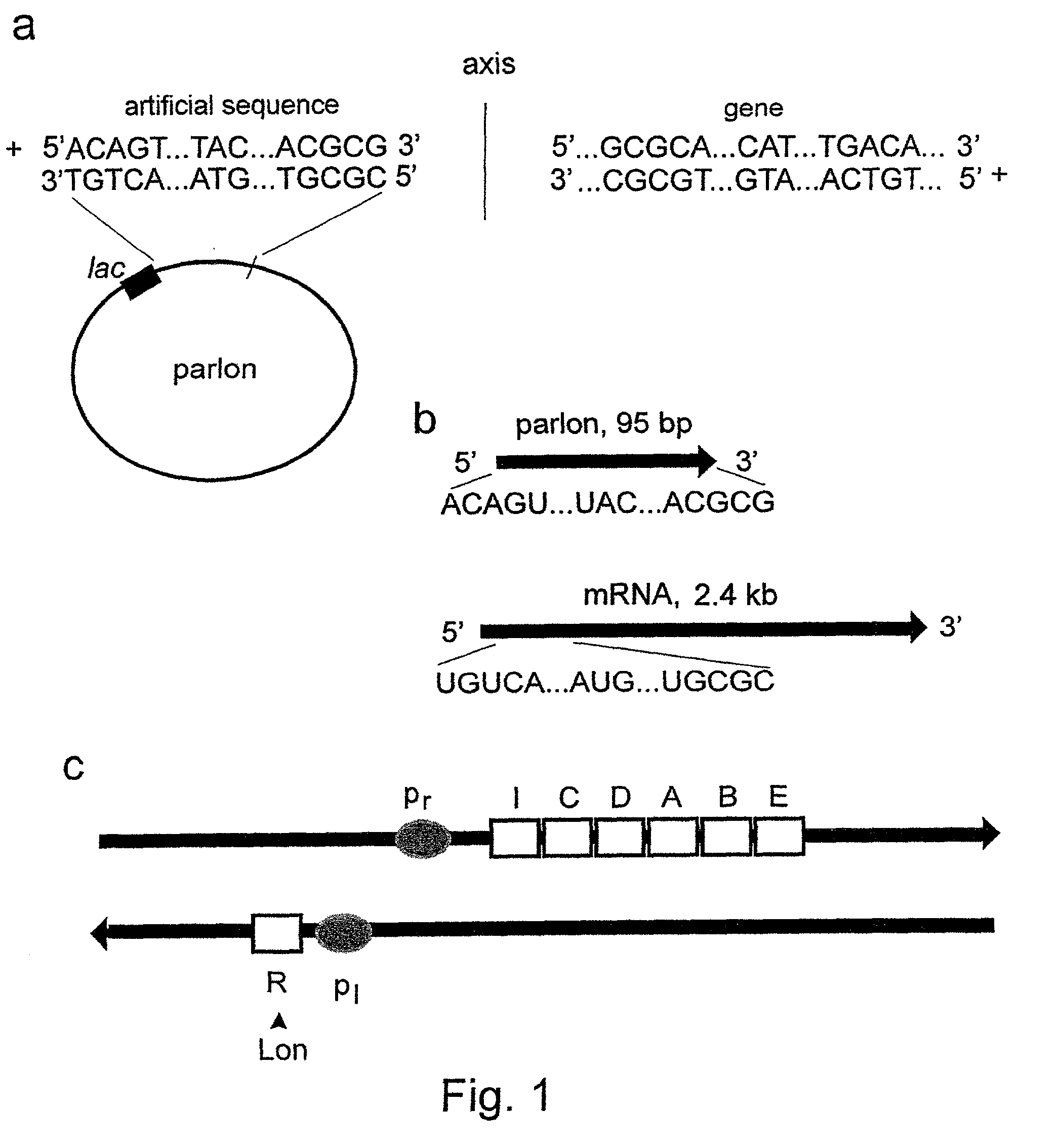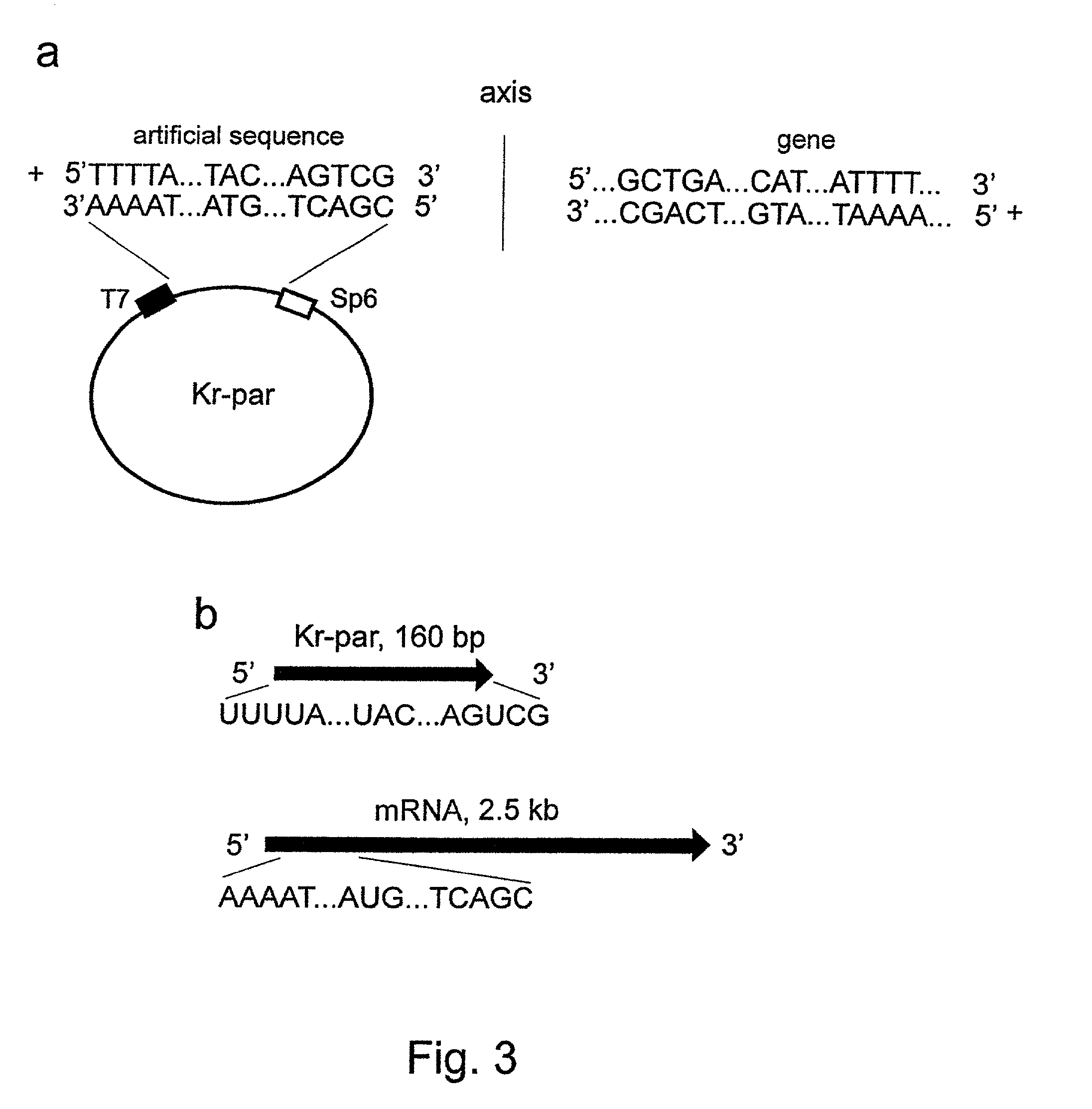Method for modifying genetic characteristics of an organism
- Summary
- Abstract
- Description
- Claims
- Application Information
AI Technical Summary
Problems solved by technology
Method used
Image
Examples
example 1
RNA Interference in Escherichia coli Induced by in vivo Synthesized RNA Molecules that are Complementary in the Same Polarity to mRNA of the lon Gene
[0037] The lon gene was selected as far as it plays a key role in different regulatory events in E. coli cells.
[0038] Artificial DNA 95-bp (bp--base pair in DNA or RNA) sequence possessing the mirror nucleotide ordering in respect to the region of the lon gene was chemically synthesized.
[0039] This DNA was used for the pUC12-construct in which the strand expressing the parlon pcRNA is under the control of the lac promoter (FIGS. 1a, b).
[0040] The construct was introduced into E. coli cells by transformation.
[0041] The impact of parlon pcRNA expression on the activity of the endogenous lon gene was measured by effect of the latter on the activity of the lux-regulon that was introduced into E. coli cells from Vibrio fischeri. Lon protease is a negative regulator of the lux-regulon because it specifically cleaves the LuxR protein. The latt...
example 2
Generation of Kruppel (Kr) Phenocopies by Injections into Drosophila Embryos of in vitro Synthesized RNA, that is Complementary in the Same Polarity to mRNA
[0044] Kr is a homeotic gene, that is active in zygote and controls segment formation at the early embryonic stage of Drosophila development, was selected as a model allowing one to observe the early development in a multicellular organism. Kr mutants have deletions of the adjacent thoracic and anterior abdominal segments. Phenotypically this is observed just after cuticula formation and hatching of the larvae. Kr mutants have deletions of the adjacent thoracic and from one to several anterior abdominal segments and, sometimes, the development of actopic tracheal ending in the anterior part of the larva [E. Weischaus, C. Nusslein-Volhard, H. Kluding, Development, 1984, vol. 104, p. 172]. Thereafter, the Kr mutants have a unique phenotype developed as early as one day, that gives an advantage for study of the effect of RNA on a ph...
PUM
| Property | Measurement | Unit |
|---|---|---|
| stability | aaaaa | aaaaa |
| polarity | aaaaa | aaaaa |
| luminescence | aaaaa | aaaaa |
Abstract
Description
Claims
Application Information
 Login to View More
Login to View More - R&D
- Intellectual Property
- Life Sciences
- Materials
- Tech Scout
- Unparalleled Data Quality
- Higher Quality Content
- 60% Fewer Hallucinations
Browse by: Latest US Patents, China's latest patents, Technical Efficacy Thesaurus, Application Domain, Technology Topic, Popular Technical Reports.
© 2025 PatSnap. All rights reserved.Legal|Privacy policy|Modern Slavery Act Transparency Statement|Sitemap|About US| Contact US: help@patsnap.com



